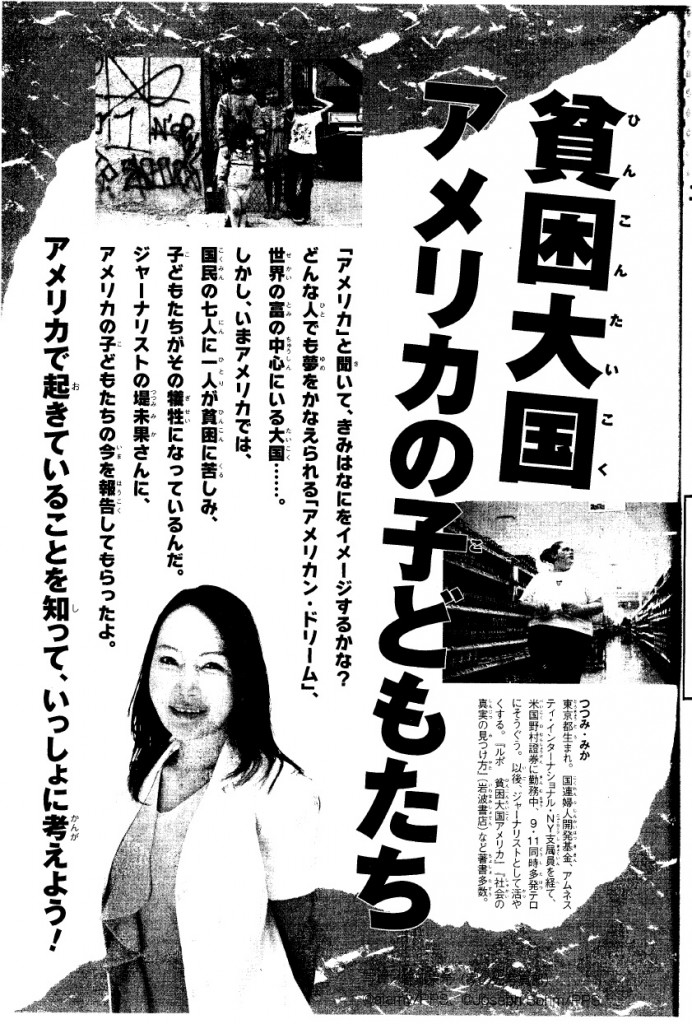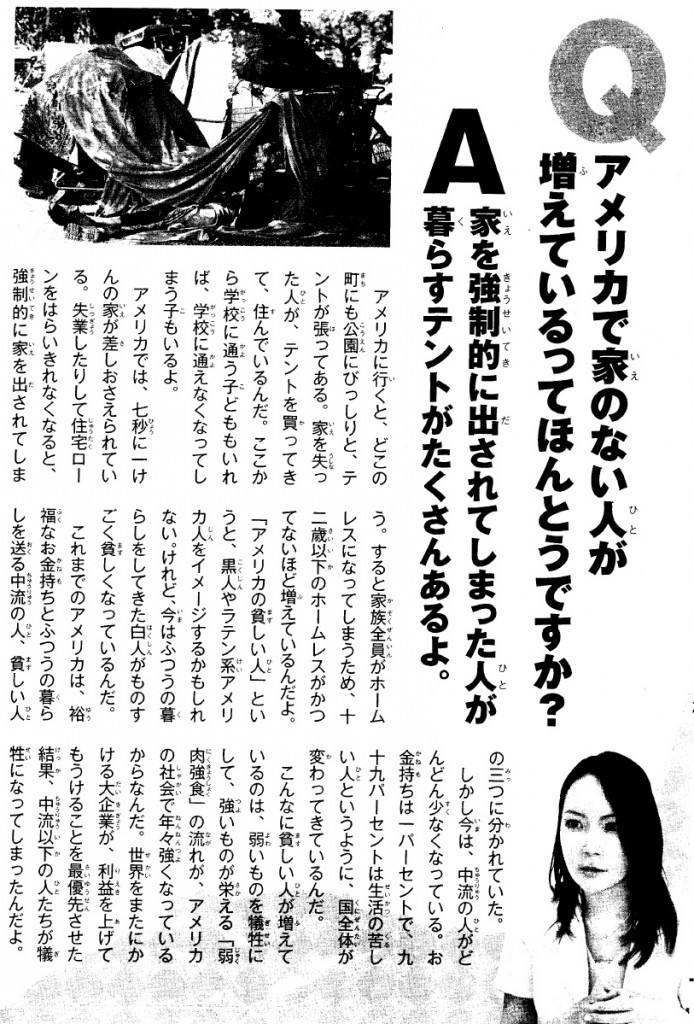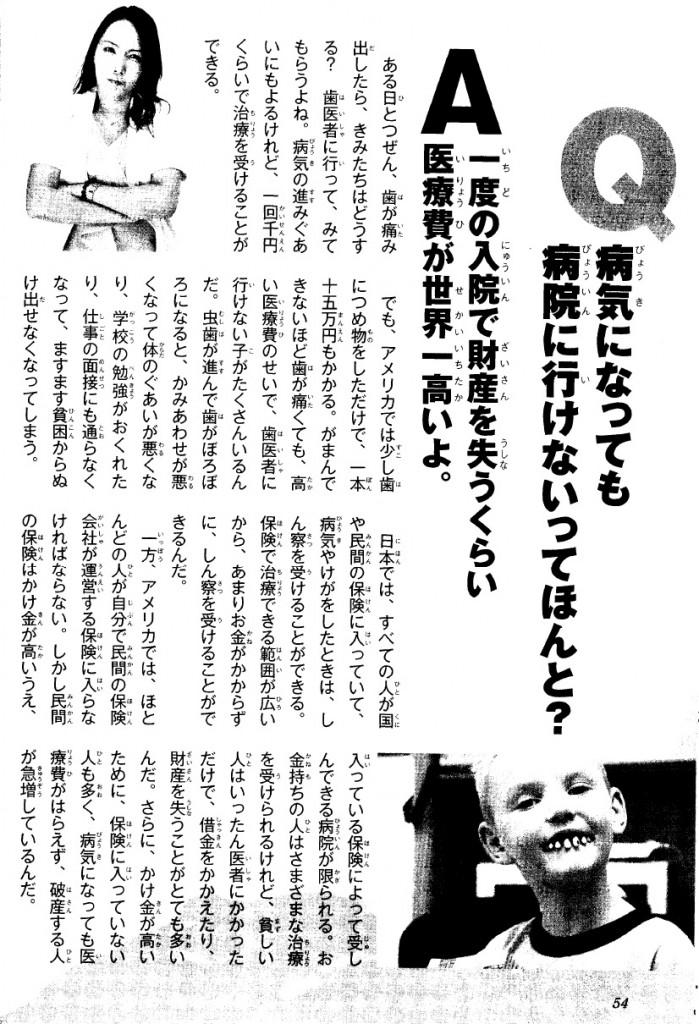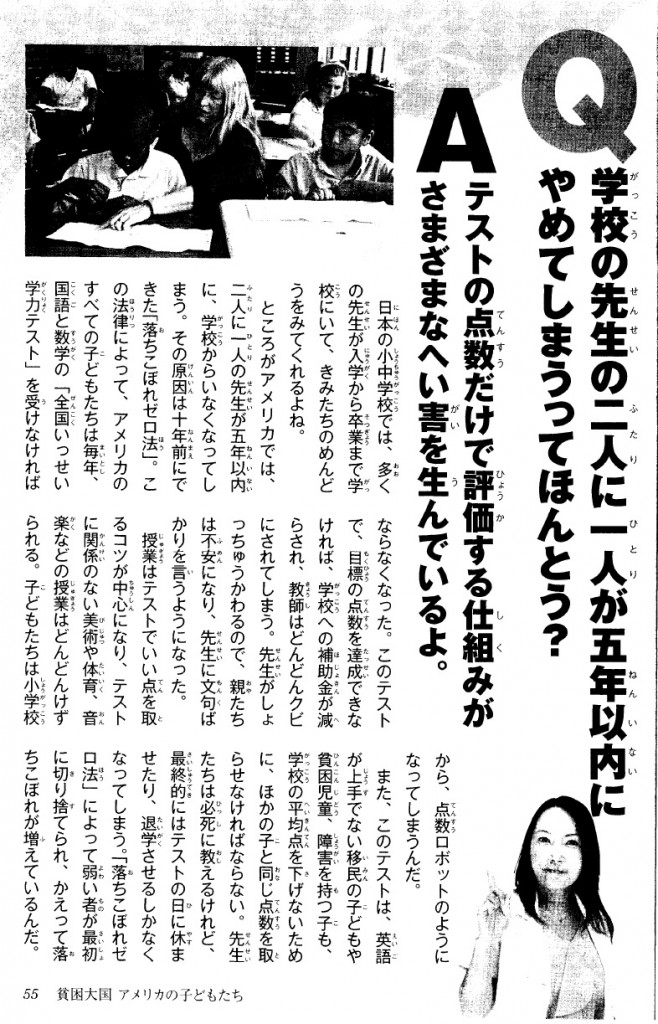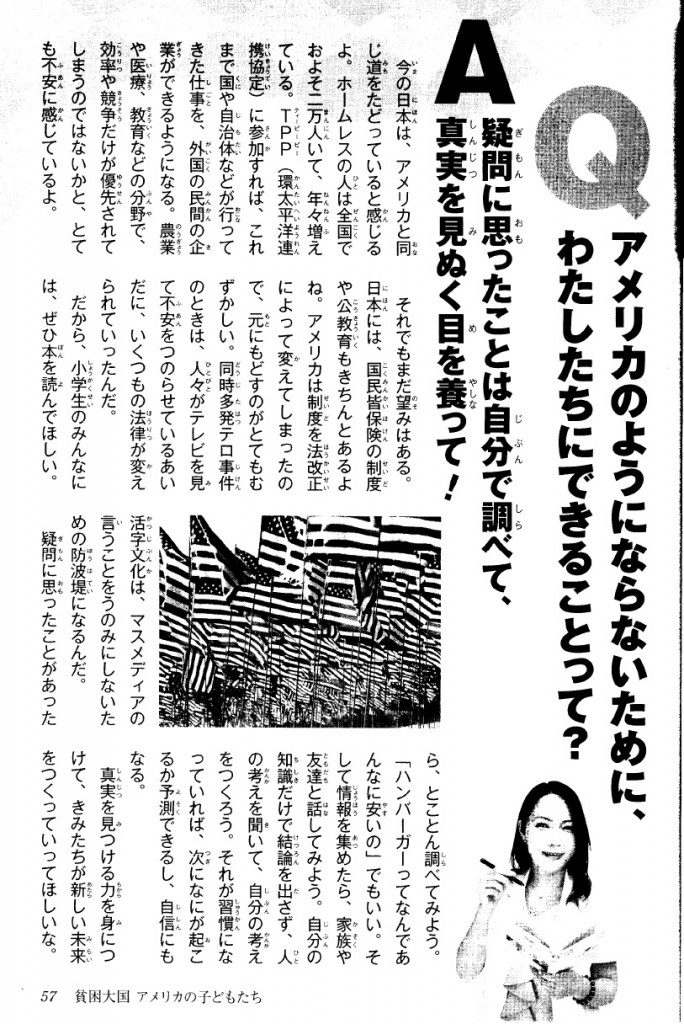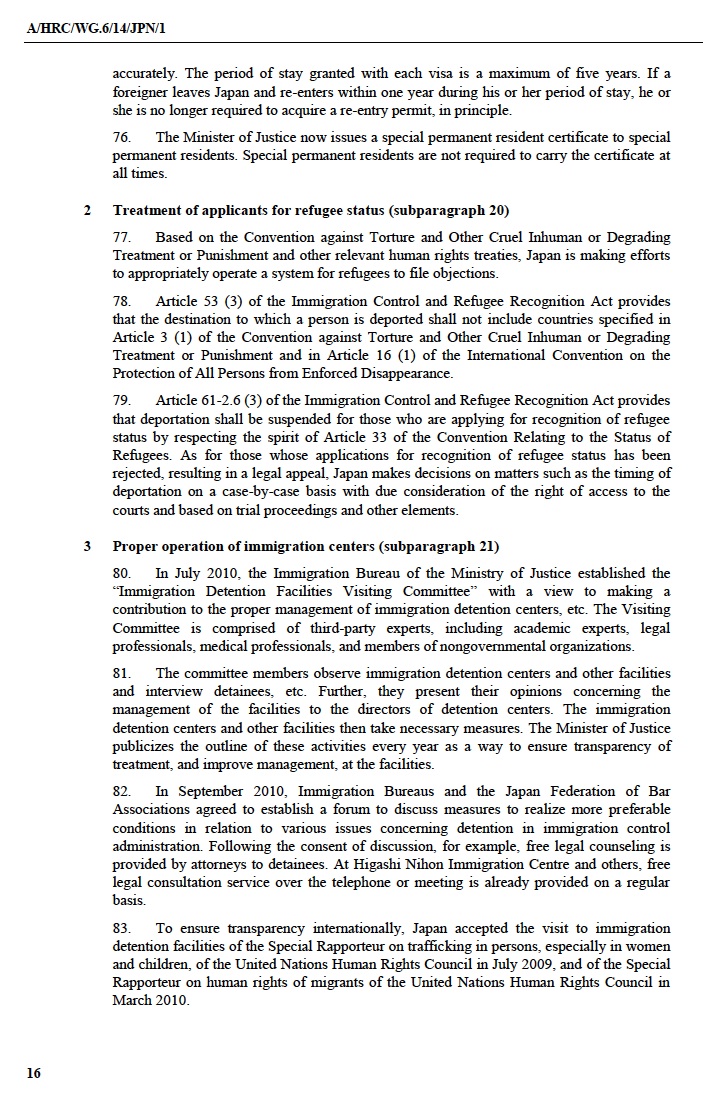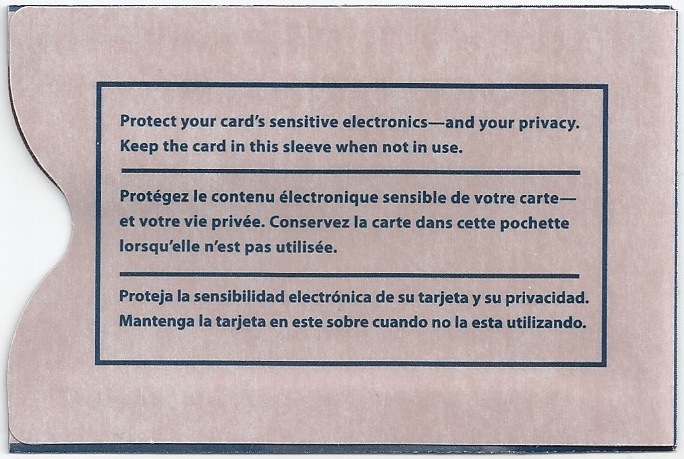mytest
Books etc. by ARUDOU Debito (click on icon):
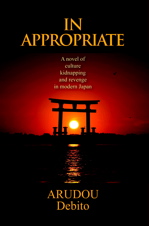




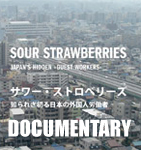

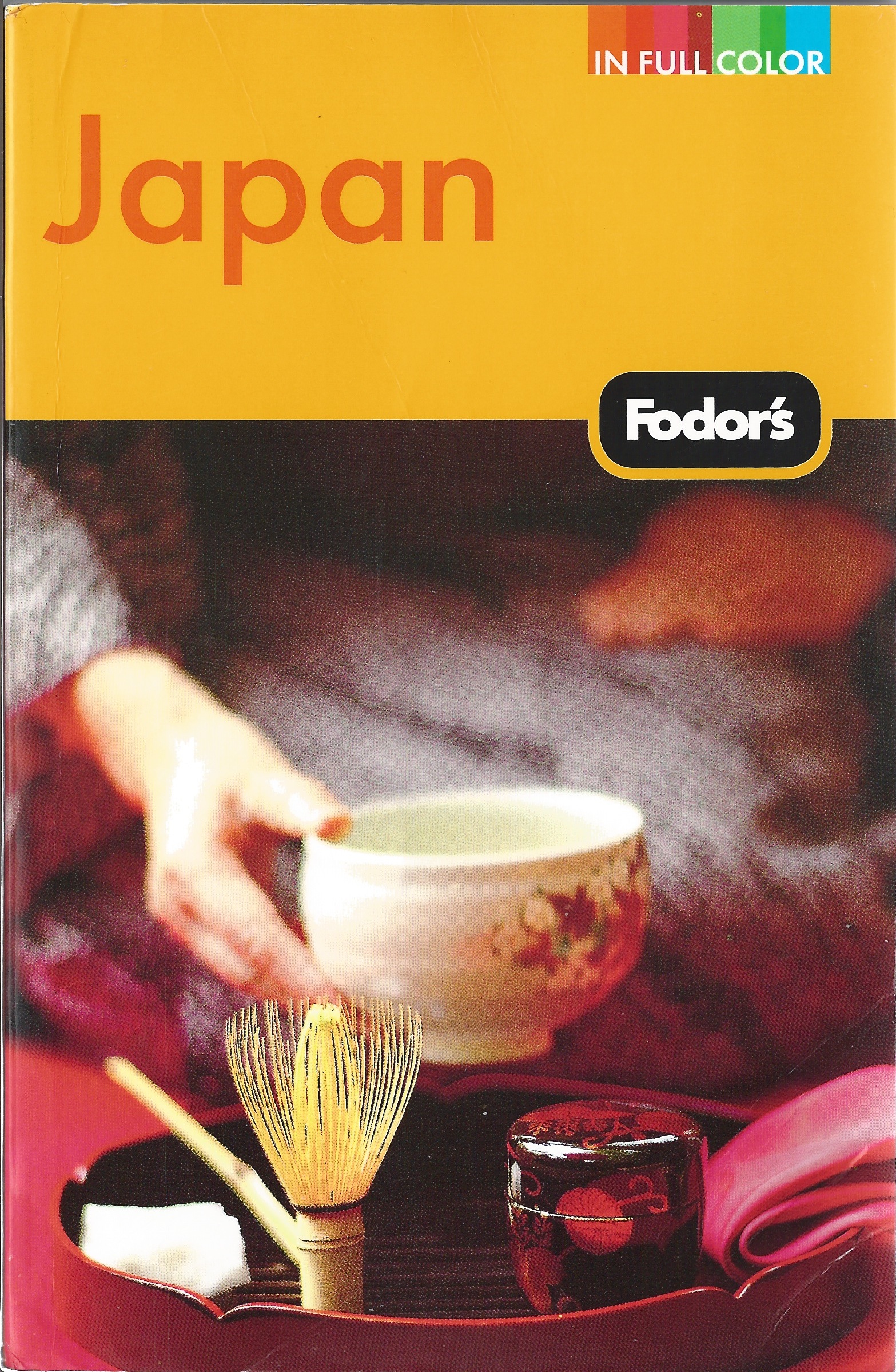
UPDATES ON TWITTER: arudoudebito
DEBITO.ORG PODCASTS on iTunes, subscribe free
DEBITO.ORG NEWSLETTER TUESDAY NOVEMBER 6, 2012
Hello Readers. I would give you a sneak preview of my latest JT column, with an advisory to read it Tuesday Japan Time. But I was too busy to put out this Newsletter yesterday, so let me give you a teaser opening and then a link:
=====================================
If bully Ishihara wants one last stand, bring it on
By ARUDOU Debito
JUST BE CAUSE Column 57 for the Japan Times Community Page
On Oct. 25, Tokyo Gov. Shintaro Ishihara announced his resignation from office. He now plans to stand for election to the Diet as head of a new conservative party. He suggested political alliances with other conservative reactionaries and xenophobes, including Osaka Mayor Toru Hashimoto and Tachiagare Nippon (Sunrise Party of Japan) chief Takeo Hiranuma (Just Be Cause, Feb. 2, 2010). And all before a Lower House election that must be held within two months.
I say: Bring it on. Because it’s time for somebody to make clear which way Japan is heading…
Rest is at http://www.japantimes.co.jp/text/fl20121106da.html
=====================================
It’s already in the Top Ten Most Read Articles of the day, thanks.
Now on with the Newsletter:
Table of Contents:
///////////////////////////////////////////
TECTONIC SHIFTS
1) AP: Where Japan’s Post-Fukushima rebuild cash really went: Corruption and coverup on grand scale in a crisis that even TEPCO admits “could have been avoided”
2) Wash Post: A declining Japan loses its once-hopeful champions (including Ezra Vogel!) — as Japan is eclipsed by an ascendant China
3) Sakanaka in Japan Times: Japan as we know it is doomed, only immigrants can save it
INCREDULITY
4) Japan Times: Japan Post Office unilaterally decides old “Gaijin Cards” no longer acceptable ID, despite still valid under MOJ
5) Kyodo: NJ on welfare (unlike Japanese on welfare) now need to pay pension premiums, says Japan Pension Service
6) Shuukan Kin’youbi: Protests against NJ businesses in Tokyo turn ugly, yet J media compares Chinese protests against J businesses to Kristallnacht
7) BV: “Victimizing the Young, Featherbedding the Old?” On how Japan’s elite bureaucratic rot is adversely affecting Japan’s children
8 ) ZakSPA!: “Laughable” stories about “Halfs” in Japan, complete with racialized illustration
ROUGH DRAFTS
9) Ishihara resigns Tokyo Governorship, seeks Diet seat as new party head. I say bring it on.
10) The first version of my Oct 2012 JT JUST BE CAUSE column (rejected for publication) blogged for your comments, on “sanctioned reality”: Do you “get” it?
… and finally…
11) Japan Times JUST BE CAUSE Column 56 on the Senkakus/Takeshima Disputes: “Revisionists marching Japan back to a dangerous place”
///////////////////////////////////////////
By ARUDOU Debito (debito@debito.org. www.debito.org. Twitter arudoudebito
Freely Forwardable
///////////////////////////////////////////
TECTONIC SHIFTS
1) AP: Where Japan’s Post-Fukushima rebuild cash really went: Corruption and coverup on grand scale in a crisis that even TEPCO admits “could have been avoided”
For all the talk we have had in the past of Japan’s efficient government and incorruptible bureaucracy (dating from, oh, perhaps Chalmers’ MITI AND THE JAPANESE MIRACLE — even Transparency International still ranks Japan higher than say, oh, the US, France, or Spain in its “Corruption Perceptions Index 2011″), one major factor that not only despirits a nation but also steals its wherewithal is an unaccountable administrative branch robbing the public coffers blind. In this case, the GOJ is reportedly siphoning off disaster funds that had been earmarked to save people’s lives and livelihoods and diverted to support completely unrelated projects. The news below goes beyond the fact that TEPCO and the GOJ have finally admitted their collusion to cover up their malfeasance in preventing the nuclear meltdown (article archived below — note that the investigative committee was led by a NJ). It shows, as Debito.org first mentioned back in December 2011 (and repeated in a different incarnation last July) that our first “see I told you so” moment (where even our critics would not capitulate for being wrong about corruption and coverup) stating that Japan’s control-freak governance system in Japan is irredeemably broken, was ever more right all along.
AP: About a quarter of the US$148 billion budget for reconstruction after Japan’s March 2011 tsunami and nuclear disaster has been spent on unrelated projects, including subsidies for a contact lens factory and research whaling. The findings of a government audit buttress complaints over shortcomings and delays in the reconstruction effort. More than half the budget is yet to be disbursed, stalled by indecision and bureaucracy, while nearly all of the 340,000 people evacuated from the disaster zone remain uncertain whether, when and how they will ever resettle… Among the unrelated projects benefiting from the reconstruction budgets are: road building in distant Okinawa; prison vocational training in other parts of Japan; subsidies for a contact lens factory in central Japan; renovations of government offices in Tokyo; aircraft and fighter pilot training, research and production of rare earths minerals, a semiconductor research project and even funding to support whaling, ostensibly for research, according to data from the government audit released last week. A list of budget items and spending shows some 30 million yen went to promoting the Tokyo Sky Tree, a transmission tower that is the world’s tallest freestanding broadcast structure. Another 2.8 billion yen was requested by the Justice Ministry for a publicity campaign to “reassure the public” about the risks of big disasters.
AP: The utility behind Japan’s nuclear disaster acknowledged for the first time Friday that it could have avoided the crisis. Tokyo Electric Power Co (TEPCO) said in a statement that it had known safety improvements were needed before last year’s tsunami triggered three meltdowns at the Fukushima Daiichi nuclear plant, but it had feared the political, economic and legal consequences of implementing them. “When looking back on the accident, the problem was that preparations were not made in advance,” TEPCO’s internal reform task force, led by company President Naomi Hirose, said in the statement. “Could necessary measures have been taken with previous tsunami evaluations? It was possible to take action” by adopting more extensive safety measures, the task force said… Investigative reports compiled by the government and the parliament panels said collusion between the company and government regulators allowed lax supervision and allowed TEPCO to continue lagging behind in safety steps.
https://www.debito.org/?p=10706
///////////////////////////////////////////
2) Wash Post: A declining Japan loses its once-hopeful champions (including Ezra Vogel!) — as Japan is eclipsed by an ascendant China
The Washington Post’s Chico Harlan does a very good article summarizing what it was once like for us “Bubble Era” veterans, and how views of Japan were once either Japan as the perfectible society to be emulated or as the irresistible wave of the future (as in, in addition to the pop-culture economic bellwethers listed below, Michael J. Fox’s boss in BACK TO THE FUTURE II being a Japanese).
Now, as the article indicates below, it’s all collapsed, and former boosters have now become pessimists (with even Japan championer Ezra Vogel now turning his attention to China!). Here in Hawaii, the Chinese consumer is ascendant, with the likely domination of Chinese over Japanese language on store signs fairly soon. In this year’s remake of TOTAL RECALL, the exotic language being used in the background was no longer Japanese (a la BLADE RUNNER), but rather Chinese. Check out the dominant kanji in this greeting card: Mainland Chinese (with Japanese far receding). I think this trend will continue as Japan is eclipsed not only by China but even South Korea (Gangnam Style on last week’s episode of SOUTH PARK anyone? It’s Japan with more color and better pronunciation of diphthongs…) in terms of economics, politics, and visions of the future.
WASH POST: Jesper Koll, an economist who’s lived in Japan for 26 years, says it’s not easy for him to keep faith in a country that’s shrinking, aging, stuck in protracted economic gloom and losing fast ground to China as the region’s dominant power. “I am the last Japan optimist,” Koll said in a recent speech in Tokyo.
Indeed, the once-common species has been virtually wiped out. It was only two decades ago that Japan’s boosters — mainly foreign diplomats and authors, economists and entrepreneurs — touted the tiny nation as a global model for how to attain prosperity and power. But the group has turned gradually into nonbelievers, with several of the last holdouts losing faith only recently, as Japan has failed to carry out meaningful reforms after the March 2011 triple disaster. The mass turnabout has helped launch an alternative — and increasingly accepted — school of thought about Japan: The country is not just in a prolonged slump but also in an inescapable decline.
https://www.debito.org/?p=10698
///////////////////////////////////////////
3) Sakanaka in Japan Times: Japan as we know it is doomed, only immigrants can save it
Japan Times: Japan as we know it is doomed. Only a revolution can save it. What kind of revolution? Japan must become “a nation of immigrants.”
That’s a hard sell in this notoriously closed country. Salesman-in-chief — surprisingly enough — is a retired Justice Ministry bureaucrat named Hidenori Sakanaka, former head of the ministry’s Tokyo Immigration Bureau and current executive director of the Japan Immigration Policy Institute, a private think tank he founded in 2007.
“Japan,” he said in a recent telephone interview, “is on the brink of collapse.” […] No nation, barring war or plague, has ever shrunk at such a pace, and as for aging, there are no historical precedents of any kind. The nation needs a fountain of youth. Sakanaka claims to have found one. Japan, he said, “must welcome 10 million immigrants between now and 2050.” […] It sounds fantastic, and in fact, Sakanaka acknowledges, would require legislation now lacking — anti-discrimination laws above all.
https://www.debito.org/?p=10690
///////////////////////////////////////////
INCREDULITY
4) Japan Times: Japan Post Office unilaterally decides old “Gaijin Cards” no longer acceptable ID, despite still valid under MOJ
MMT: An interesting bit of news that was on the JT homepage this week. It seems that although the alien registration card is considered equal to the new zairyu card until July 2015 by the government, it appears not for certain government agencies. Japan Post has a notice on their homepage stating that foreign residents can no longer use the alien registration card as of July 9th, 2012 (or in other words, the same day the zairyu card became available). How the post office can reject ID which is still valid and basically force longer-term residents into changing over their cards immediately is beyond my comprehension.
As a further bit of news regarding this story, I called the immigration help line on October 1, 2012, to see if they were aware of this development. The staff informed me that yes, the alien registration card is still valid, as stated and acts as one’s zairyu card until July 9th, 2015. When I asked if they were aware that the Japan Post officially began rejecting the alien registration card the very same day the zairyu card became available, they replied that perhaps in cases such as with banks and the post office, you may have to switch over to the new card in order to have acceptable ID. I quickly pointed out that since the government (namely, the Ministry of Justice, no less) has deemed this ID to be equal to the zairyu card for a further three years, shouldn’t it be unacceptable (unlawful?) for any any semi-government agency or private business to reject it? They agreed that my argument “made sense.”
The immigration staff then suggested that if my alien registration card is rejected by the post office or other place of business that I should give them the number for the Tokyo Immigration administration office (03-5796-7250) so that the post office can call them and get a clarification. It was at that point that I hinted that perhaps it was the job of the immigration department to inform all relevant agencies to stop making arbitrary rules regarding which government-issued ID they will choose to accept: to which I got no answer. Strange, indeed.
https://www.debito.org/?p=10632
///////////////////////////////////////////
5) Kyodo: NJ on welfare (unlike Japanese on welfare) now need to pay pension premiums, says Japan Pension Service
Kyodo: Japan Pension Service has drawn up a guideline that renders foreign residents on welfare no longer eligible for a uniform waiver from premium payments for the public pension, effectively a turnaround from a long-held practice of treating them equally with Japanese, sources familiar with the matter said Tuesday.
Human rights activists said it is tantamount to discrimination based on nationality. In fiscal 2010, roughly 1.41 million households were on public assistance. Around 42,000 were households led by foreign residents.
In a reply dated Aug. 10 to a query from a local pension service office, JPS, a government affiliate commissioned to undertake pension services, said, “Public assistance benefits are provided to foreigners living in poverty as done so for Japanese nationals, but foreigners are not subject to the law on public assistance.”
https://www.debito.org/?p=10679
///////////////////////////////////////////
6) Shuukan Kin’youbi: Protests against NJ businesses in Tokyo turn ugly, yet J media compares Chinese protests against J businesses to Kristallnacht
Something came up over the past month that deserves mention on Debito.org when it comes to putting all the “violent protests against Japan” into some perspective. Something that was not given much audience in the Japanese media — far-rightists targeting domestic minorities in Japan due to the recent flap over some offshore rocks.
Yes, people say “both sides are guilty of saber rattling and banging nationalist drums.” But one thing I like to remind people is: Who picked this most recent fight over the Senkakus? And who keeps perpetually stirring things up by having what I would consider a denialist view of history when it comes to being an aggressor and colonizer over the past hundred years? Sorry, but many of Japan’s prominent leaders do. And they (deliberately, in this case) serve to stir up passions overseas. Then when people overseas protest this, who then suddenly claims that the foreigners are overreacting or Japanese are being targeted and victimized? Japan’s leaders. And Japan’s media, to rally the rest of the public.
However, Japan’s victimization trope is being overplayed. Japanese media, according to the Japan Times, is turning up the invective to compare Chinese protests to Kristallnacht.
Well, consider the following domestic actions by Japanese far-rightists against not just foreign business communities overseas, but actual NJ residents of Japan who have been living in Japan for generations (who, by all reasonable standards — including fighting and dying for the Japanese Empire — should be Japanese citizens by now). Are we seeing the same comparisons to Krystallnacht? And will we see those comparisons in the media once we get glass in the gutter and bloodied faces? If the standard for violence in Japan is also “verbal” (as in kotoba no bouryoku), then we’re on our way.
Stop it, everyone, before you do something you might regret later. (Then again, perhaps not, if Japan’s revisionist attitudes towards history continue to hold sway.)
https://www.debito.org/?p=10659
///////////////////////////////////////////
7) BV: “Victimizing the Young, Featherbedding the Old?” On how Japan’s elite bureaucratic rot is adversely affecting Japan’s children
Guest author “Bitter Valley” is back again with another thing he wants to get off his chest. I think he should, so here it is. One of my pet theories about Japan’s swing towards insularity and conservatism is that as people get older (and Japan as a society is doing just that demographically), they get more politically conservative and resistant to change — or at least change that is not in their best interests. And as “Bitter Valley” points out, it means an inordinate weighting of political power and economic resources in favor of the old at the expense of the young (especially since the very young have no vote, ever fewer numbers, and few political and civil rights to begin with). This is manifesting itself in ways that BV thinks are worth mentioning in Japan’s most cosmopolitan city. Given how centralized political power is in Japan, what happens here will set precedents for the rest of the nation.
BV: Hi Debito, this is “Bitter Valley” again. We’ve just had some terrible news that the second major children’s facility we have access to in Shibuya, the Kodomo no Shiro (Kiddies Castle) is closing down in 2015. It’s a bit of a hammer blow for us, as we have already just lost the Jidokaikan (Tokyo Children’s Center), which is going to be demolished for another old people’s home. Regardless of what might really behind the closures (more on this later) it’s going to lower the quality of life for kids and mums and dads in Shibuya (and wider afield) considerably.
Both children’s facilities are/were two of the only major educational/ fun/ accessible/ cheap (no or low cost) play centers. Both, incidentally, were/are tremendous resources for Shibuya’s large ratio of multinational kids. Parents of older children say that there are schools with most classes not only have one but several multiracial or foreign or Japanese but of NJ parentage in classes. Increasingly it’s seen as no big deal. That’s great, at least to non-knuckleheads and/or racists. But the closures suck. First of all the Tokyo Children’s Hall (Jidokaikan) was shut down last year and this spring…
https://www.debito.org/?p=10687
///////////////////////////////////////////
8 ) ZakSPA!: “Laughable” stories about “Halfs” in Japan, complete with racialized illustration
Debito.org Reader CJ submits the following ZakSPA! page talking about Japan’s genetic internationalization in tabloid style: How “funny” it is to be a “half.” Reading through the articles (enclosed below), I’m of two minds about this. On one hand, it’s good to have the media acknowledging that there are Japanese kids of diverse roots and experiences out there, with some tone of saying how silly it all is that so many people get treated in stereotypical ways (with a “roundtable of halfs” at the end giving their own views on the situation). On the other hand, the level of discourse gets pretty low (“some foreigner talked to me in Narita Airport in English and it was so frightening I felt like crying”), and an opportunity to actually address a serious issue of how Japan has changed is wasted on parts laughing, parts crybabying, parts confirmation that treating people as “different” because they look “different” is a natural, if not inevitable, part of life in Japan. I’ll let Debito.org Readers read for themselves and decide whether this important topic is being broached properly.
https://www.debito.org/?p=10674
///////////////////////////////////////////
ROUGH DRAFTS
9) Ishihara resigns Tokyo Governorship, seeks Diet seat as new party head. I say bring it on.
Something very important happened a few days ago when Tokyo Governor Ishihara Shintaro made a surprise announcement that he would resign his governorship, launch a new political party, and run for a Diet seat in the next Lower House election due in two months.
I say bring it on. This xenophobic old bigot (now 80) has fallen for one of the oldest tricks in the book: self-delusion, brought on by decades of megalomania and ideological sound-chambering within a cadre of sycophants — which Alberto Fujimori (an old friend of Ishihara and his elite ruling circles) similarly fell for when the self-deluded demagogue buggered off back to Chile (forfeiting his unextradictable safe haven in Japan) to stand for reelection in Peru. Fujimori, as you know, was then extradited to Peru for trial and is now doing essentially life in prison. But I digress.
I say bring it on for two reasons. One is that even if elected (which he will be, under Japan’s Proportional Representation system — the main avenue for celebrity schmoes to pad their resume and stroke their egos), Ishihara can do less damage as a Dietmember of a fringe party (analysts already are beginning to doubt the strength of the Rightist alliance between other fringe parties) than as Governor of Tokyo, with an entire Metropolitan Police Force (the strongest and most influential in all of Japan) at his disposal to target people he doesn’t like. One of the reasons he says he resigned his Diet seat in 1995 after 25 years in office is because of his frustration with the powerlessness of the Diet in the face of the pervasive Japanese bureaucracy (which, as he correctly claims, rules the country). Now he’s going right back to that same Diet, and I think he thinks he’ll stop at nothing short of becoming PM (He won’t. He won’t live long enough. Osaka Mayor Hashimoto is the bigger threat at half the age.)
The other reason is because it’s time to put some cards on the table. The Center-Left in Japan (in the form of the DPJ) tried their liberalizations (with NJ PR local suffrage, etc.) and lost badly due to the hue and cry over how NJ, if given any power in Japan, would automatically abuse it and destroy Japan). The image in Japanese politics nowadays is of a rightward swing. Alright, let’s see just how rightward. Japan’s bureaucrats like things just the way they are (their sole purpose is to keep the status quo as is, even if that means Japan irradiates itself and strangles itself to death demographically). It would take a miracle (something I think not even Ishihara is capable of) to dismantle that system. If Ishihara wins, Japan’s rightward swing is conclusive, and the world will have to stop ignoring a resurgent militarist xenophobic Japan. If Ishihara loses, that will take a lot of wind out of Rightist sails and push the country back towards centrism.
In this poker game, I believe Ishihara will lose. And NJ in Japan have already won a victory by having that bigot abdicate his throne/bully pulpit as leader of one of the world’s largest cities.
https://www.debito.org/?p=10694
///////////////////////////////////////////
10) The first version of my Oct 2012 JT JUST BE CAUSE column (rejected for publication) blogged for your comments, on “sanctioned reality”: Do you “get” it?
Before I wrote my monthly Japan Times column on the Senkakus/Takeshima Disputes published on Oct 2, I wrote a completely different column that approached the issue from the back door: How Japan’s enormous focus on “genuine” and “legitimate” leads to diversity getting subsumed. And when it leads to diversity in opinion being subsumed, you get a society that is particularly susceptible to top-down control of not only the dominant social discourse, but also the very perception of reality within a society. And that leads us to crazy ideas such as a few far offshore rocks being worth all this fuss.
Heavy stuff. Unfortunately, the people who approve columns at The Japan Times didn’t “get” it, even after two major rewrites and sixteen drafts. (Actually, in all fairness it wasn’t only them — two other friends of mine didn’t “get” it either. But two of my friends in academia did. And we suspect that it was just too “Ivory Tower” for a journalistic audience.) So eight hours before deadline, I rewrote the damn thing entirely, and what you saw published is the result.
But The Japan Times suggested that I blog it and see what others think. So here it is: The column on the Senkakus/Takeshima Disputes that I wanted to run. I think there are plenty of ideas in there that are still worth salvaging. But let me ask you, Debito.org Readers: Do you “get” it?
https://www.debito.org/?p=10656
///////////////////////////////////////////
… and finally…
11) Japan Times JUST BE CAUSE Column 56 on the Senkakus/Takeshima Disputes: “Revisionists marching Japan back to a dangerous place”
The Japan Times
Tuesday, Oct. 2, 2012
JUST BE CAUSE
Revisionists marching Japan back to a dangerous place
By ARUDOU DEBITO
Courtesy http://www.japantimes.co.jp/text/fl20121002ad.html
Version with comments and links to sources at https://www.debito.org/?p=10645
ENDS
///////////////////////////////////////////
All for this month! Thanks for reading! ARUDOU Debito
DEBITO.ORG NEWSLETTER TUESDAY NOVEMBER 6, 2012 ENDS





![]()



